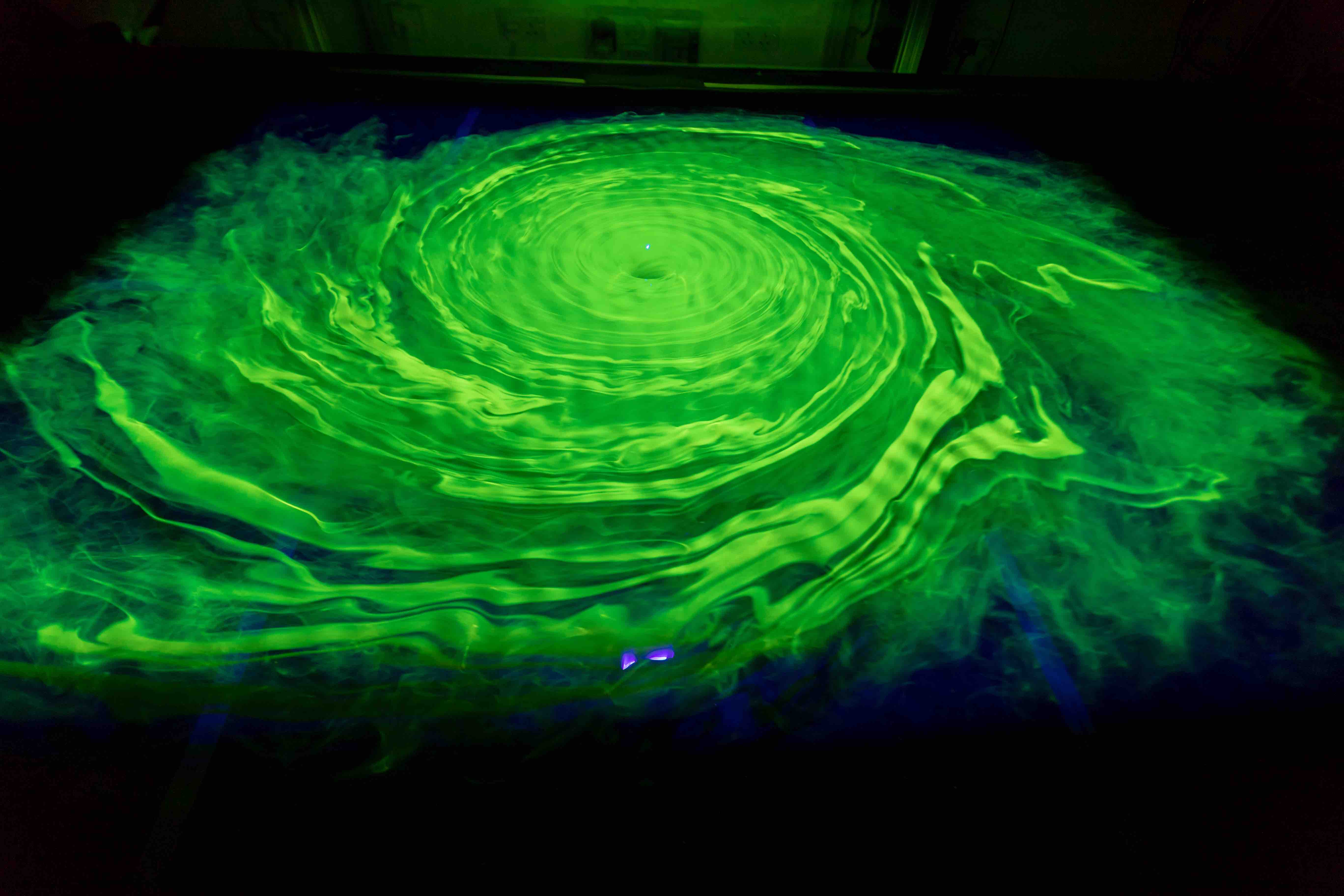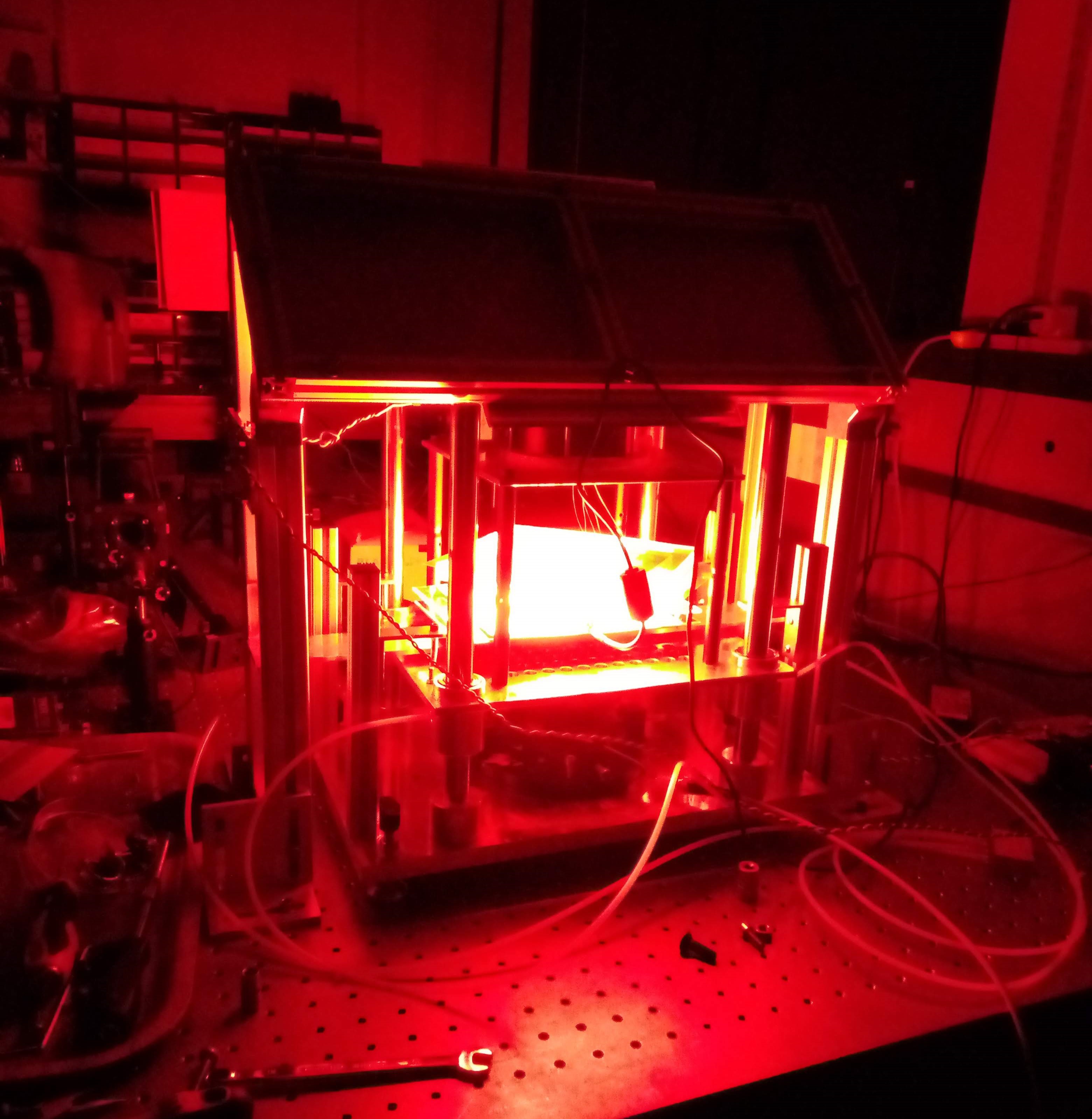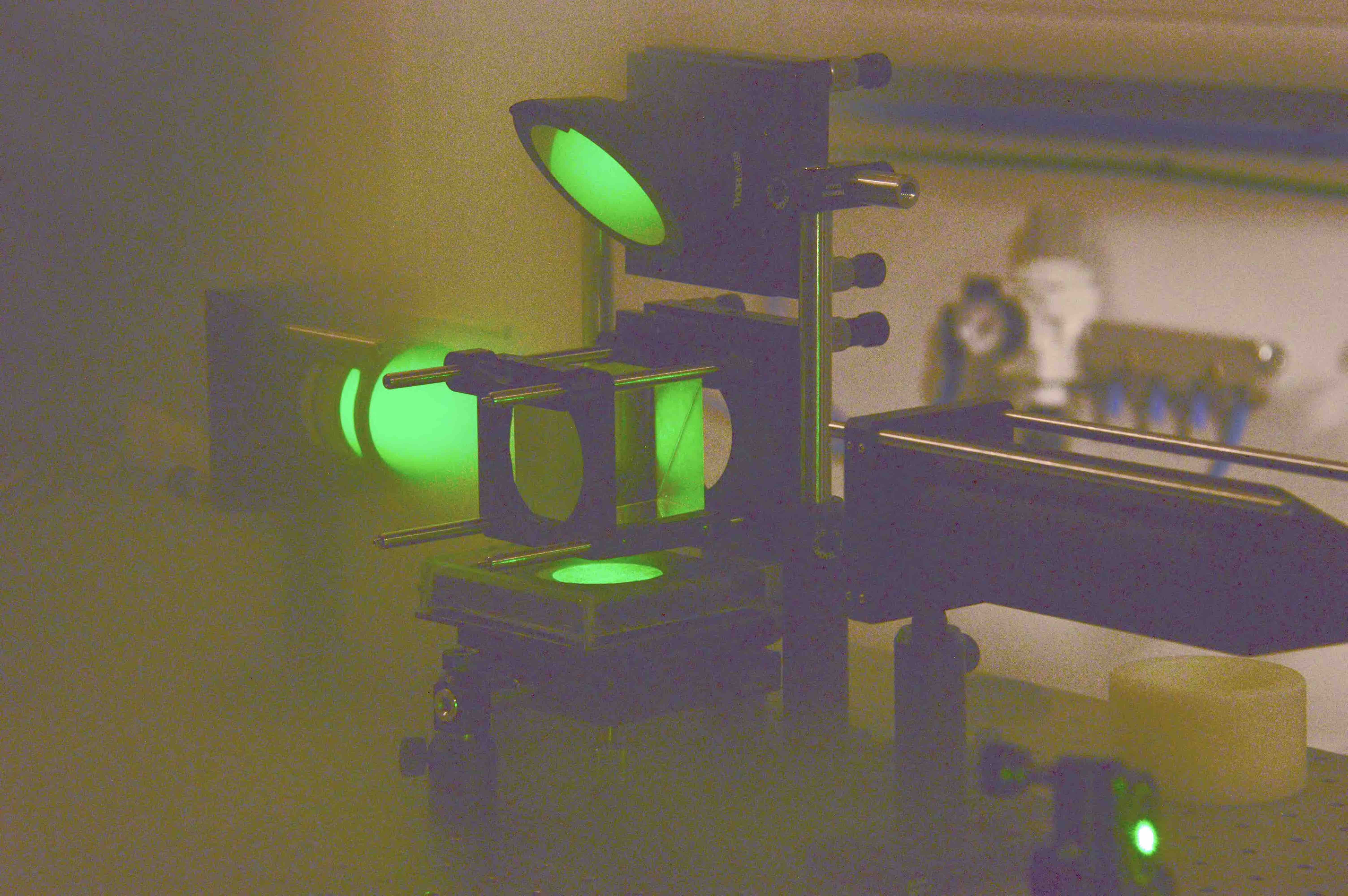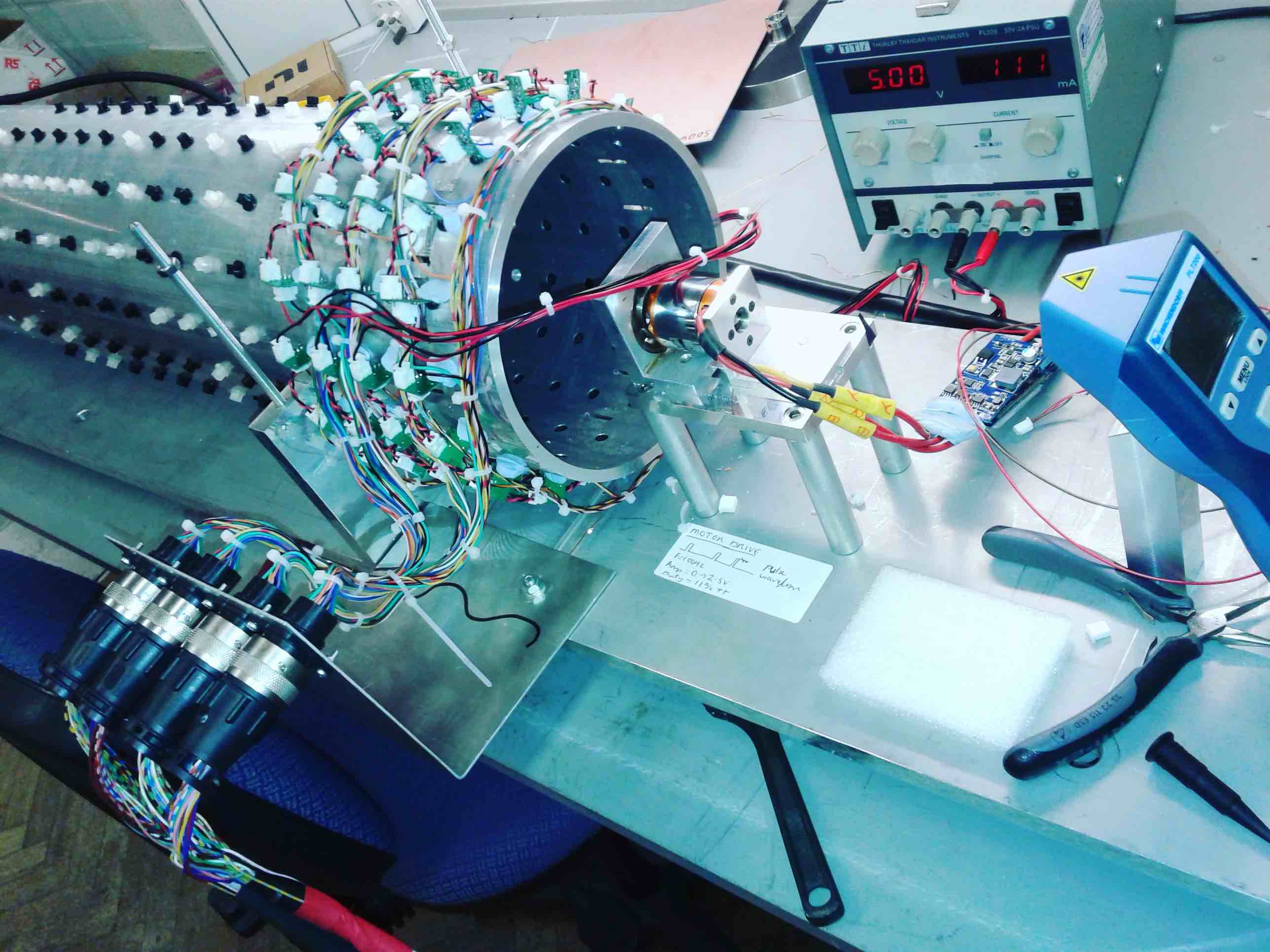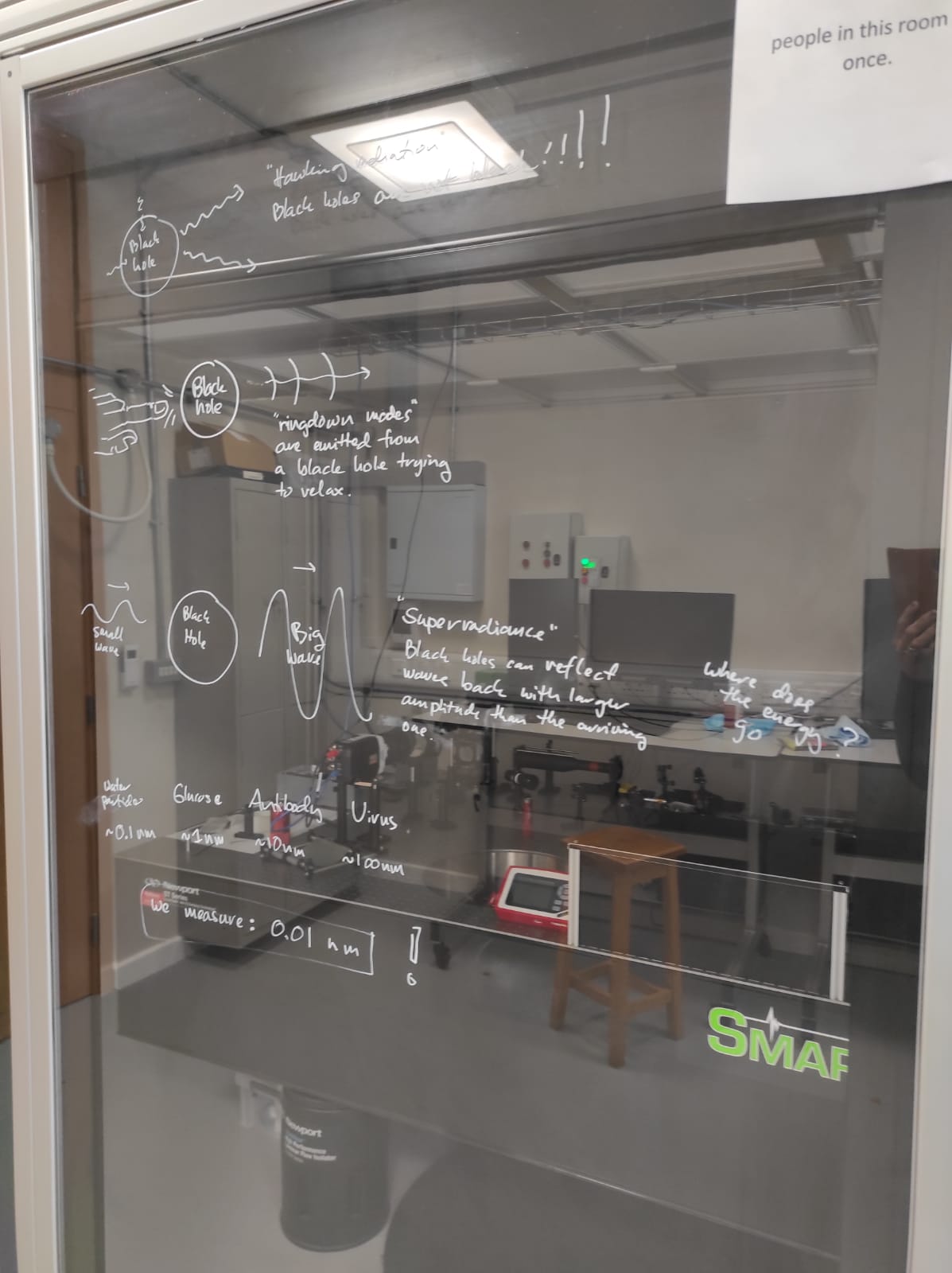Hydrodynamic Black Hole Simulator
Our hydrodynamic rotating black hole simulator consists of a 3 m long, 1.5 m wide and 0.5m high rectangular water tank. Water is pumped continuously in from one end corner, and is drained through a hole (which can be varied in diameter) in the middle. The resulting fluid flow is a stationary draining vortex flow, or short a bathtub vortex flow. The setup includes a bespoke wave machine, allowing us to generate a wide range of perturbations of the air-water interface waves, which are referred to as surface waves, within our setup. To monitor and analyse the wave dynamics, we developed and implemented a variety of surface wave detection methods. The dynamical equations for surface waves interacting with the rotating vortex flow can be mapped onto massless scalar fields interacting with the gravitational potential caused by a rotating black hole in (2+1) spacetime dimensions. This setup was used to study in depth rotating black hole superradiance, ringdown and backreaction in a controlled laboratory environment.
